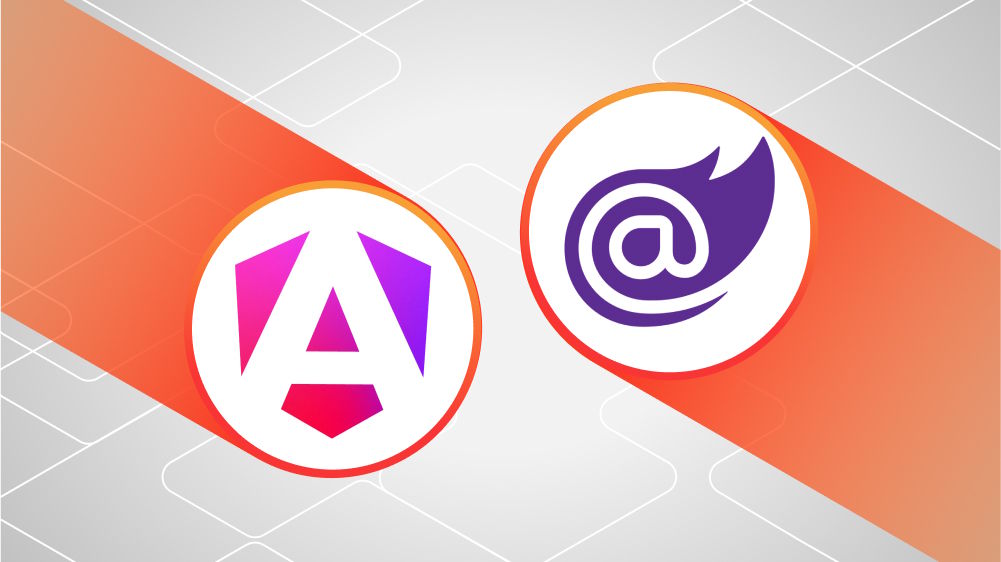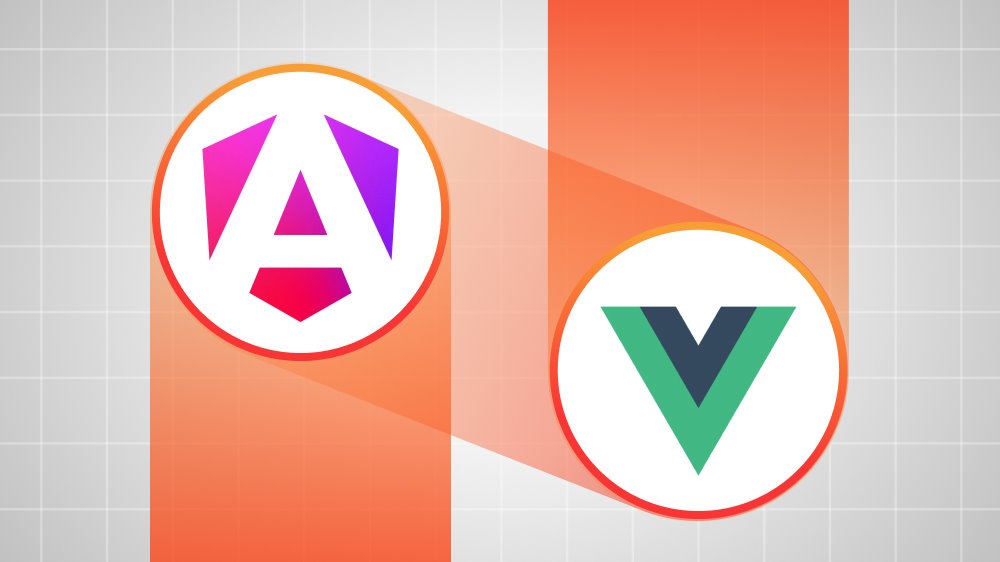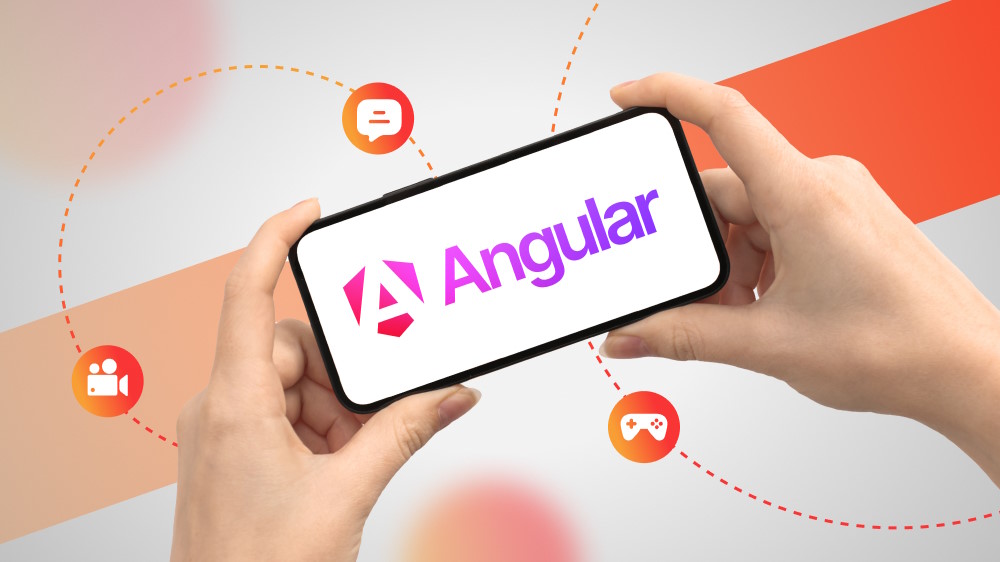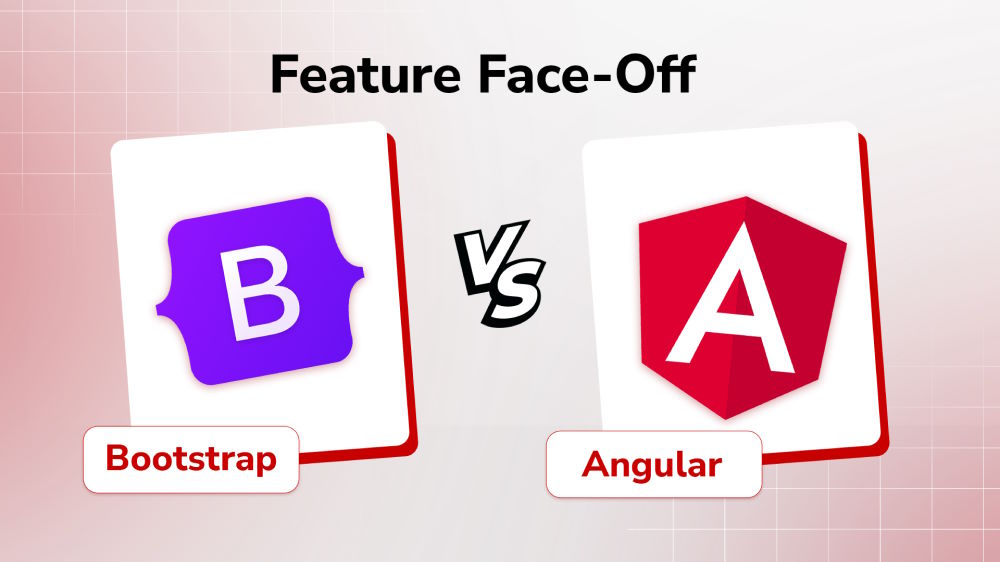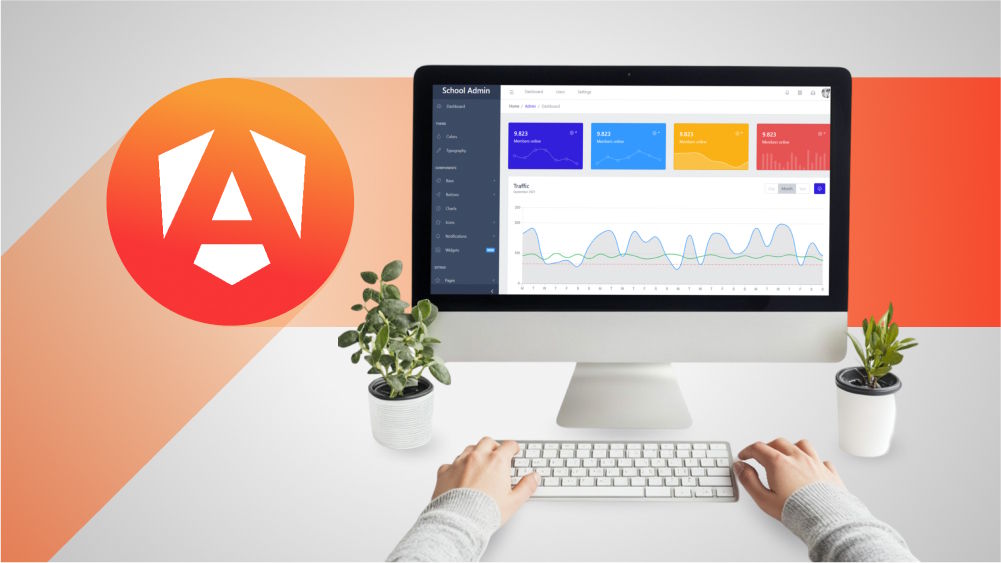
Choosing Between Node.js and Angular? Here’s A Complete Guide
Angular vs. Node.js - two essential tools, one powerful combination. Uncover how they work together to power the most dynamic web applications.
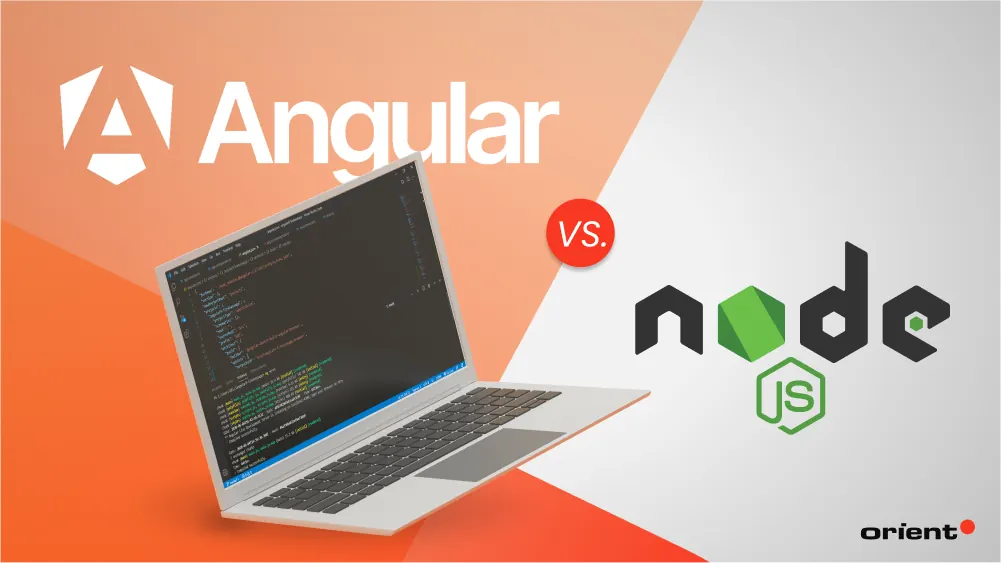
Content Map
More chaptersIn full-stack JavaScript development, it’s easy to come across Angular and Node.js. They’re often found together in popular tech stacks, like MEAN (standing for MongoDB, Express.js, Angular, Node.js). Since both are under the JavaScript umbrella, it’s easy to assume they’re similar or interchangeable, or that one must choose between the two to build a dynamic tech stack.
However, both of these claims are common misconceptions. For starters, Angular is a frontend framework used for building dynamic, client-side applications, while Node.js is a backend runtime environment for running JavaScript on the server. The two technologies are not direct competitors. Rather than choosing one, Angular and Node.js complement each other in building full-stack JavaScript applications.
With this in mind, why would you still need to compare one against another? First, it’s to clear up any misconceptions about the two being competitive technical tools. Next, we will underline how well they work together. Lastly, examine how they work well together despite their many differences.
So, here is a guide comparing Angular and Node.js to help you understand how different they are and how well they complement one another. Let’s dive in!
Key Takeaways:
- Angular and Node.js are complementary, not competing technologies. Angular is a front-end framework, while Node.js is a back-end runtime environment, often used together in full-stack development.
- Angular is suited for building dynamic client-side applications, while Node.js is optimal for scalable, real-time server-side applications and APIs.
- Angular optimizes UI performance with AOT and Ivy, while Node.js efficiently handles high concurrency with its asynchronous, event-driven model.
- Angular’s complexity comes from TypeScript and numerous built-in tools, while Node.js requires understanding asynchronous programming.
- Angular is suited for interactive UIs, while Node.js is best for data-intensive, scalable network apps.
What Is Angular and Its Key Features?
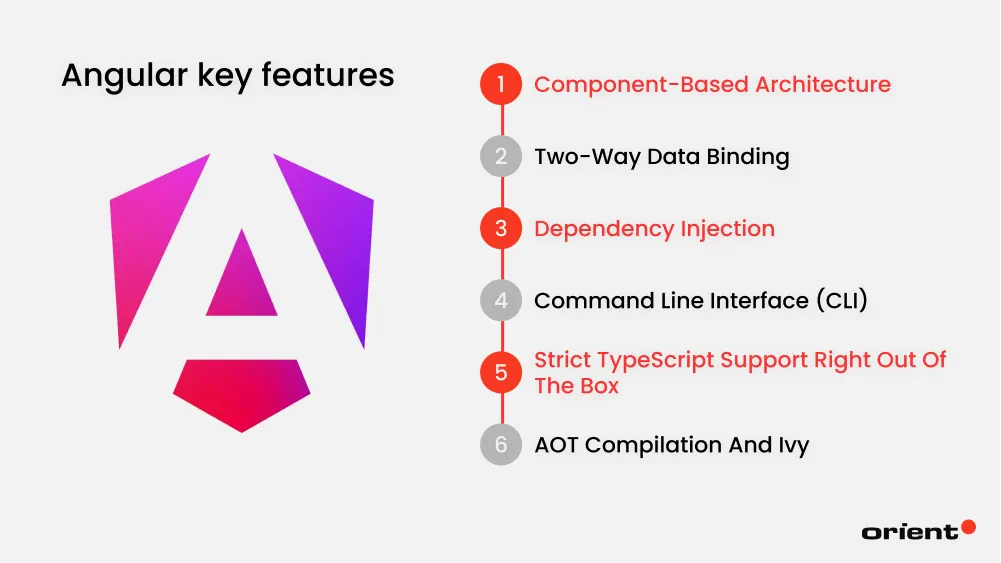
Angular is a powerful, open-source front-end framework built on TypeScript for creating dynamic single-page applications (SPAs), maintained by Google.
Developers favor Angular for its robust tool set and features to build dynamic and interactive applications.
Component-Based Architecture
Angular follows a modular structure, meaning the application is divided into smaller and reusable parts called modules. Each module is well-encapsulated, meaning each contains its services, pipes, directives, components, and other dependencies.
This particular feature makes enterprise-scale apps more maintainable since application segmentation also means a separation of concerns. The feature also allows for lazy loading – only loading what the user needs at the time.
Two-Way Data Binding
Two-way data binding in Angular keeps the model and view in sync in real time. In other words, it allows the model and view to share information. The application “listens in” on life events and reflects changes immediately, improving the user’s overall experience.
Dependency Injection
According to Angular’s official documentation, dependency injection (DI) is “a design pattern and mechanism for creating and delivering some parts of an application to other parts of an application that require them.” Simply put, it is a design pattern that makes code more flexible and modular. Instead of components or services creating their own dependencies, DI automatically provides them as needed. This approach keeps the code clean, modular, and easy to manage.
Command Line Interface (CLI)
Angular’s command line interface, or CLI, is a development tool that streamlines the development flow by aiding in the process of creating, scaffolding, testing, and deploying apps efficiently. CLI removes manual tasks, handles, and automates essential ones for app development, such as code generation and testing automation. Overall, this tool saves teams time and produces higher-quality code.
Strict TypeScript Support Right Out of the Box
TypeScript, a JavaScript superset, helps Angular developers write more reliable and maintainable code. Utilizing the best coding practices, strict TypeScript support creates more robust applications with minimal runtime errors.
- Strict TypeScript: Strict TypeScript means Angular comes with strict typing by default. Variables, functions, and components thus have well-defined types, fewer bugs, and a cleaner codebase.
- Decorators: Angular heavily uses decorators (like @Component and @Injectable) to add metadata to classes, making it easy to configure components and services.
- Generics: Angular supports generic types to make code more flexible and reusable, especially when working with data structures or services.
AOT Compilation and Ivy
Angular utilizes Ahead-of-Time (AOT) Compilation and Ivy Rendering to boost performance levels. Thanks to these features, applications become more responsive and lightweight.
- AOT compilation compiles the application in the build process instead of at runtime, leading to faster loading times because the browser doesn’t need to compile templates while the app runs.
- Ivy Rendering Engine is the framework’s new generation rendering engine. Ivy updates the apps more efficiently when there are changes in the data. To create faster-loading apps, Ivy generates smaller bundles.
What Is Node.js? Key Features
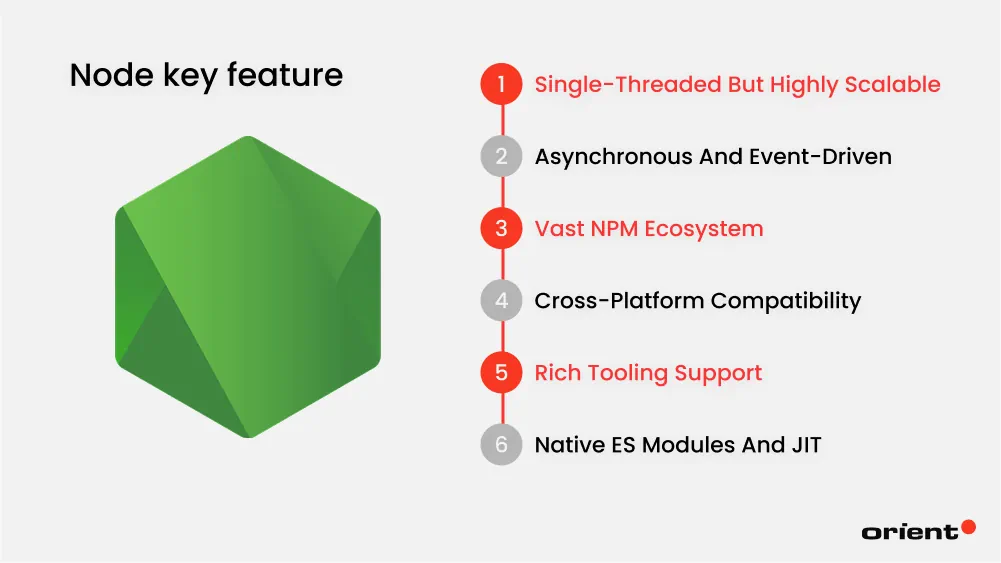
Node.js is an open-source, cross-platform JavaScript runtime environment built on Chrome’s V8 engine. It allows developers to execute JavaScript outside the browser, ena bling server-side development with support for asynchronous, event-driven programming to build scalable network applications.
Single-Threaded but Highly Scalable
Node.js follows a single-threaded architecture. Threads are an operating system’s smallest processing unit. While traditional systems implement multiple threads to handle multiple tasks at once, Node.js utilises a single thread to handle multiple tasks. It doesn’t wait for one request to finish before moving to the next. Node uses an asynchronous, non-blocking approach to keep handling new tasks.
This approach saves memory and resources, allowing the technology to be highly scalable.
Asynchronous and Event-Driven
Node.js is often known to be asynchronous. This non-blocking I/O model triggers a callback function to process the requested data once it arrives, making Node.js a great choice for real-time tasks or handling a high volume of concurrent connections.
Node.js also listens in on events, e.g., file reads or requests, and reacts once they occur. This is how the technology handles various tasks simultaneously, keeping the application lightweight, scalable, and high-performing.
Vast NPM Ecosystem
NPM stands for Node Package Manager. According to Node.js’ official website, npm is “the standard package manager for Node.js” and it is “the biggest single language code repository on Earth,” with over 2.1 million packages reported as of September 2022.
As its name suggests, npm is the “manager” that automatically comes with Node.js once you install it on your computer. NPM manages the following:
- Modules or packages
- Free packages to download and use in your project
The packages can be downloaded, installed, and updated with ease. It gives developers a clear view of managing and integrating dependencies and third-party functionalities.
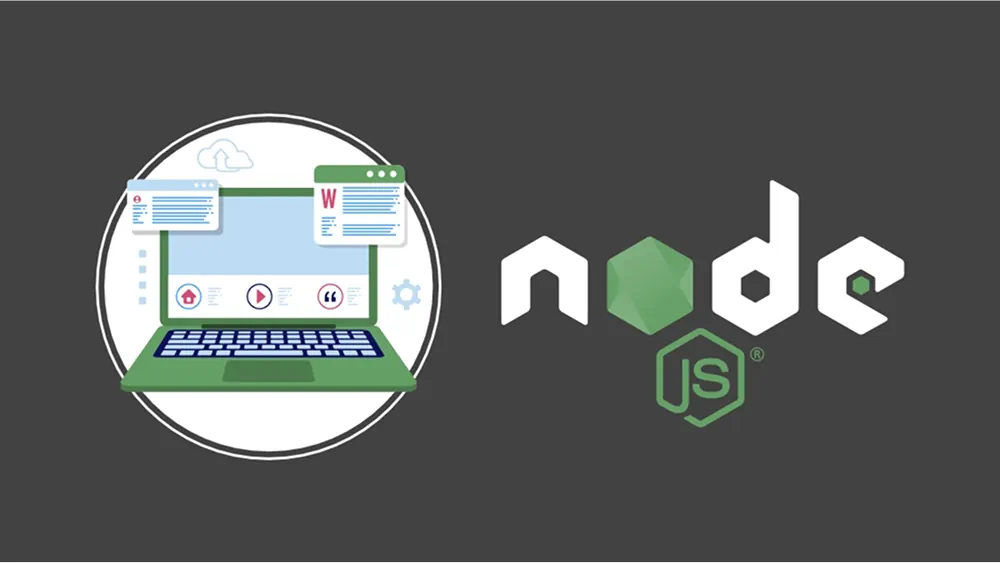
Cross-Platform Compatibility
Node.js is designed to be cross-platform, meaning developers can reuse the same codebase to deploy on numerous operating systems like Windows, Linux, and macOS with little to no modification.
Rich Tooling Support
Node.js developers have rich tooling support to enhance and speed up the development experience. There are tools for almost every key task. For instance, there are frameworks to build web applications or scalable server-side apps, like Express.js or Nest.js, testing frameworks like Mocha or Chai, and an easy-to-use communication tool like Socket.io, etc.
Native ES Modules and JIT
ES Modules is a module format in JavaScript that addresses the lack of built-in code sharing between scripts. It’s compatible with modern browsers like Chrome, Safari, and Firefox, as well as Node v12+, but it requires a specific configuration.
Since Node.js 20, Native ES Module (ESM) support has become more stable, allowing developers to use modern JavaScript module syntax (import/export) without compatibility issues. Additionally, Node.js leverages the V8 Just-In-Time (JIT) compiler, which compiles JavaScript to machine code dynamically, significantly boosting runtime performance.
Angular Vs. Node: Side-by-Side Comparison Table
| Angular | Node.js | |
|---|---|---|
| Execution environment | Client-side | Server-side |
| Framework vs runtime | Frontend framework | Runtime environment |
| Programming language | TypeScript | JavaScript (with TypeScript support) |
| Installation & setup | Install through Angular CLI | Install through npm |
| Community & ecosystem maturity | Backed by Google, a well-established community and ecosystem | Extensive and mature ecosystem |
| Application type (Server-side, Client-side, SPA) | Single-page applications (SPAs), dynamic web interfaces | Server-side applications, APIs, and real-time apps |
| Performance profile | Optimized for dynamic and interactive user interfaces | High performance for I/O heavy tasks |
| Project size/ Scalability | Scales well for complex front-end applications | Highly scalable, suitable for large backend systems |
| Server-Side Rendering/ SEO friendliness | Supports SSR with Angular Universal | Supports SSR with frameworks like Next.js |
| Learning curve | Moderate Requires an understanding of asynchronous programming | Steep Requires knowledge of Angular concepts and TypeScript |
| Main security risks | XSS, insecure APIs, vulnerable packages | Injection attacks, DoS, CSRF, insecure dependencies |
Deep Dive: Key Differences Between Angular and Node.js

Execution Environment
Node and Angular aren’t direct competitors. Node manages backend logic while Angular manages the frontend presentation. While Node operates on the server side, running JavaScript to handle data and process requests, Angular works on the client side to build dynamic and rich user interfaces. Together, the two can create a full-stack app, but separately, they contribute to completely different development processes.
Framework Vs. Runtime: What You’re Working With
Angular is a frontend framework with a collection of tools for building interactive and dynamic UIs. These tools aim to speed up the web development process as developers wouldn’t need to build every element from scratch.
Node is a runtime environment, meaning it allows you to execute JavaScript code outside of a web browser, typically on the server. Numerous frameworks assist the web development process with Node, like Koa.js, Sails.js, Hapi.js, Express.js, etc.
Programming Language: JavaScript Roots with Different Flavors
Angular’s programming language is TypeScript, which improves code quality, stability, and readability. Node, on the other hand, uses JavaScript as its programming language. Starting from version 23.6.0, it has added native support for TypeScript, meaning developers can run TypeScript code directly without needing to transpile it first.
Application Type: Where Each Technology Shines
Angular is an ideal choice if your project prioritizes dynamic, client-side applications. This entails:
- Single-page applications (SPAs): Interactive and highly dynamic web apps like Gmail, Trello
- Progressive web apps (PWAs): These apps load quickly, work offline, and provide users with a native-like experience. An example is Twitter Lite.
- Other apps with dynamic user interfaces, like content-heavy websites (e-commerce platforms) or CRM systems with dashboards or data visualization.
Node.js is a great choice in backend development, handling real-time, data-intensive, and scalable network applications.
- Real-time apps: Chat applications or online gaming apps with intensive data update requirements, like Slack or Discord.
- API services and microservices: backends that expose APIs to be consumed by client apps like Angular, e.g., RESTful APIs.
- SSR and SEO-friendly apps: combined with frameworks like Next.js for SSR to enhance SEO, this often includes content-rich websites or blogs.
Project Size: Which One Scales Better?
Angular is highly scalable when it comes to intricate frontend apps. Through its modular architecture and techniques like lazy loading, Angular helps optimize the apps’ performance as they expand. Nonetheless, its scalability focuses more on complex UI interaction rather than high traffic or multiple simultaneous connections.
Node.js, on the other hand, focuses on backend scalability. Thanks to its asynchronous, event-driven architecture, it handles concurrent connections and scales horizontally (spreading the workload across numerous servers). Thus, Node can handle heavy traffic.
Installation and Setup: Getting Started
To get started with Angular, you’ll need to set up Node.js first. Visit the official Node.js website, download the LTS (Long Term Support) version compatible with your operating system (Windows, Mac, Linux), to install it. Then, you can use npm to install Angular CLI and other libraries. Installing Node.js first is crucial, as Angular CLI and many Angular packages rely on npm.
Learning Curve: Which One Is Easier to Pick Up?

Angular is notorious for being difficult to master, seeing how aspiring developers need to familiarize themselves with TypeScript and an array of Angular built-in tools, including Angular CLI, Angular Router, Angular HTTP, RxJS, and so on.
Node isn’t “easy” to pick up per se, as developers still need to know about asynchronous development. They might also need to learn Node’s frameworks.
Still, both have extensive documentation and a community of active developers to ask questions when needed.
Wrapping Up
Both Angular and Node are powerful tools for building dynamic and scalable applications. It’s important to keep in mind that the two aren’t direct opposites or competitors with one another. They are two parts of a complete full-stack solution for building an app with a scalable back end and interactive frontend.
Are there any other technologies that confuse you in your upcoming project? If you’re looking for professional input, don’t hesitate to contact the Orient Software team!

